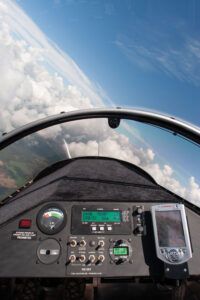
I was at 6000 feet agl when I pulled the stick back with consternation, pushed it left with hesitation and watched snow-covered fields fill my vision while the airplane dove and the noise level rose. I recovered before the airplane executed my command to, in effect, dive inverted for earth. Oopsies.
I debriefed myself as I climbed back to 6000 feet. I concluded I hadn’t pulled the nose up enough, nor had I fully committed the ailerons to the maneuver. (When I say ailerons, I mean me.) Stupid Pilot Trick Number Two: teach yourself aerobatics. My second attempt went well. My logbook records March 13, 2005, as the day I performed my first roll, as well as rolls two through 16.
I was hands-off of the controls the evening of June 6, 2007. My daughter held the stick, but not still. What went through her mind as the earth and sky traded places and her body weight briefly doubled I can only guess, but her face hinted at joy. I do know she processed the event far differently than a pilot would have because she wasn’t a pilot. In under an hour of coaching she deftly guided Metal Illness through a barrel roll, exiting on course and on altitude. My face also hinted at joy. When a person you built rolls an airplane you built, that’s one of life’s highlight-reel moments. We celebrated with more rolls. And then ice cream.
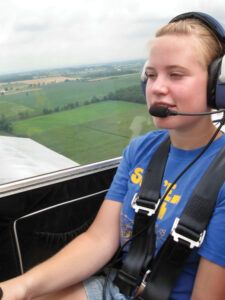
On October 9, 2010, I invited a friend on a fall color flight to Wisconsin’s Door County Peninsula. The flight trebled her total time in small airplanes. Near Death’s Door (a coastal passage at the peninsula’s tip), she began to feel airsick. We landed until her condition improved. (I’ve never needed the Vomit in the Cockpit checklist and didn’t intend to use it that day.) To get home, I struck on the idea for her to fly the airplane as a distraction. Many pilots, I must point out, over-control a Sonex when they take the stick for the first time. It happens to Cessna pilots, it happens to B-52 pilots and, as you shall soon read, it happens to regional-jet pilots who are also flight instructors. They bring expectations into the cockpit.
When my friend took control, she didn’t send us into a dive, fill the windshield with clouds or place the horizon cockeyed to the glareshield. We didn’t even porpoise. For over an hour she held us steady while making the small adjustments I directed. Had there been needles in the panel to influence her inputs, she wouldn’t have known how to interpret them. Her head wasn’t crowded with what should happen. Her senses informed her inputs. It was seat-of-the-pants flying because there was nothing else it could be. She got us home—without getting sick. My face hinted at joy.
The evening of March 16, 2011, I carried a flight instructor aloft to secure my privilege to fly for another two years. I complied with his request for a 360°, 45°-bank turn. After I rolled level 360° later, he mentioned my altitude deviated by 150 feet. He asked for the controls, which I relinquished in anticipation of him demonstrating the same maneuver. He rolled 45° left and, reminiscent of my first roll attempt, the nose dropped and the descent rate broke 1000 feet per minute. His inputs weren’t based on the aircraft’s response, they were based on his expectation of how it would respond. He was slow to recognize how quickly he over-commanded the aircraft. He recovered—neither on heading nor altitude—noting the Sonex didn’t handle like a regional jet. My face hinted at joy.
Flying by Sight, Sound and Sensation
I was a by-the-numbers, by-the-gauges pilot prior to flying my Sonex. Flight training made me so. I stared at dials to make sure I was doing the right things. I never connected the sights, sounds and sensations of flight to specific control inputs, nor was I taught to. Every phase of flight was driven by needles and numbers: climbing (70 mph), turning (ball centered, vertical speed zero, artificial horizon on the 30° mark), deploying flaps (10° on downwind, 20° on base, full on final), flying straight and level (set the artificial horizon before takeoff) and throttle adjustments (2750 rpm for cruise, 1500 rpm abeam the numbers, etc.) I needed needles to fly.
Student pilots experience a seat-of-the pants flying moment when they advance the throttle on their first solo. Lightened of 180 pounds of niggling instructor, an airplane’s performance goes from familiar to foreign. Acceleration is faster. The takeoff is shorter. The climb rate is higher. On my solo, I was quickly behind the needles and above pattern altitude. I adapted my needle monitoring and, therefore, my control inputs, to solo flight because I wasn’t taught to recognize and react to the sights, sounds and physical sensations of flight, which could have weaned me off needles.
Metal Illness made me a seat-of-the-pants pilot. I’d go so far as to say it made me a pilot. Flying a one-of-kind aircraft (all homebuilts are one-of-a-kind aircraft), solo, required it. The almost complete absence of needles assured it. Flight testing instilled an awareness of how senses can inform inputs. Instead of droning around for 40 hours performing maneuvers by pre-established numbers, as I did in flight training, flight testing had me discovering the numbers myself. In doing so, I learned to associate the sights, sounds and sensations of flight with the airplane’s speed and attitude. For instance, I could tell by the resistance on the flap handle if I was fast on final. I was asked by another Sonex owner at what speed I rotated on takeoff. I didn’t know. I still don’t. I never looked.
Transition Training or Training Transition?
We’ve all devoured flight reports while shopping for the ideal homebuilt and, particularly, in preparation for a first flight. We absorb flight report observations such as “light ailerons,” “heavy elevator,” “the rudder requires 4.5 pounds of breakout force.” A person sitting in a stationary Sonex at AirVenture, stirring the joystick, commented on how well-balanced the controls felt. None of those observations can prepare you to fly an airplane any more than knowing a car needs 2 pounds of force to move the accelerator, 5 pounds for the brake and 1 pound to activate the turn signal can prepare you to drive that car. It’s more likely to hinder your performance by filling your head with expectations.
I proved this in Metal Illness flying with pilots and penguins alike. My daughter had no notion of entry speeds, yaw or P-factor. My friend didn’t know what those pedal-thingies did. But they both commanded my Sonex well. My BFR check ride instructor heaped expectations on it and was inadvertently pulling G’s moments after taking the stick (I can’t say he took control).
Transition training is a growing concern for homebuilders, kit aircraft designers and insurance companies alike. Maybe flight training itself needs to transition back to those fabled days of Cubs and Champs—when flight instruction had little to do with needles and numbers. The real horizon rises and falls and tilts left and right, just like a line on an artificial horizon. With increasing airspeed, an airplane gets light on its wheels until it flies. With decreasing airspeed, controls become mushy. When your body feels heavy in the seat, your elevator input may be too aggressive. What if flight instruction taught instinct first and sought needles only for a second opinion? There may be less need for transition training. I know I would have been a better pilot for it.







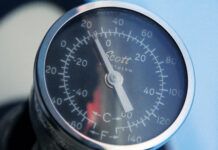
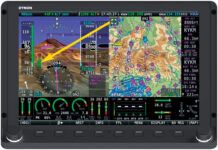

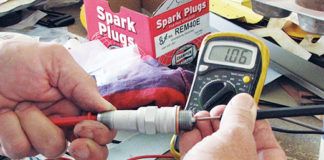


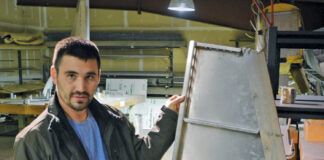
Cool!
Try something in your Sonex sometime: in flaps up trimmed-out level flight, try to change roll attitude with rudder only, with your hands OFF the stick. My experience with the only sonex (conventional tail) I have flown was an eye opener.
I would appreciate hearing how yours responds.
Hi Ian,
The Sonex is neutrally stable, not positively stable like Cessnas and other mass-produced general aviation aircraft. The neutral stability makes it sporty and aerobatic. It is not a hands-off airplane. In the best conditions it will fly straight and level only briefly before it diverges. It’ll go wherever it’s pointed until something (pilot, turbulence, changing wind, etc.) points it elsewhere. Stepping on the rudder while hands off on the stick is not something you do in a Sonex unless intentionally for the resulting fun. On the other hand, the differential ailerons permit limited use of the rudders. I could do aileron rolls with my feet flat on the floor.
Blue Skies….
Kerry Fores
I teach ultralight in Canada. My aircraft an older Zenair 601 has very little instrumentation. A basic engine monitor from the engine manufacturer and an angle of attack, they call it a lift reserve instrument for some reason. Airspeed indicator, useless, so inaccurate as to be a waste of time.
AOA and GPS. All you need.
My students are taught to fly the airplane. Initially All our landings are power off at initial point and now get yourself to the end of the runway. In most of these high drag ultralights that means heading for the button,,, now.
I spend winters in Arizona very near an airport with a lot of instruction. It drives me crazy watching these students fly 2 mile final.
Another is 15 min runups at fill power before flying, really. Overheating?
I have been heard to holler “coarse pitch , coarse pitch”. Let’s try not to piss off everybody living within a mile.
Hi Ray,
Thank you for the comment and for keeping piloting in pilot training. My Sonex was fitted with a Lift Reserve Indicactor so I am familiar with those. Great instruments! Here in we have marveled for years at Cessna 172s making those 2-mile long final approaches—over the lake no less. Some of them cross the numbers with full flaps and full power!
Blue Skies….
Kerry Fores.